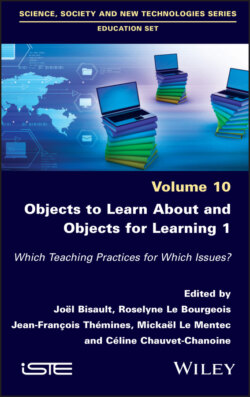Читать книгу Objects to Learn about and Objects for Learning 1 - Группа авторов - Страница 13
Part 1 of Volume 2 – Objects and Representations of Space and Time
ОглавлениеSpace and time, brought together in Part 1 of Volume 2, may suggest a familiar disciplinary split, illustrated by geography and history. This is not the case, however, even if, because of the groupings made during the compilation of the work, objects to learn about/objects for learning in geography are placed together here.
Regarding space, the issue discussed in Chapters 1, 3 and 5 is how objects to learn about make it possible to learn, not so much about geography itself or during geography lessons but, more broadly, about space. Learning about space means articulating through the medium of school objects – wall maps (Xavier Leroux in Chapter 1), “paper” maps and sketches (Sylvie Considerère, Anne Glaudel, Maud Verherve and Mikaël Glaudel in Chapter 3) – or non-school objects – tactile interactive maps (Chapter 5) of images and relevant information in an egocentric spatial frame of reference (oneself, here, at this moment) with relevant images and information in an allocentric spatial frame of reference, for example, a universal system of geographic coordinates. Object systems are thus required to support sensory, emotional, linguistic and cognitive articulations, which are not simple matters, in the standard situation of the geography class (Chapters 1 and 3) or during experiments conducted with visually impaired people (Chapter 5). The common issue in the three propositions is perhaps to describe this change of status imprinted on the proposed objects which, from tools, must become objects – representations – in other words, discourses supported by a materiality that permits the sharing of knowledge.
This part allows us to ask whether it is easier to materialize space rather than time. Thus, Chapter 5 seeks to further improve the multimodality (touching and verbal interactions) of objects that enable visually impaired people to find their bearings in space. Christine Croset, in Chapter 4, focuses on the difficulty of representing musical time: “A problem arises when we want to represent these dimensions: while a visual product (writing, drawing, photo) relies on spatial perception, oral flow (linguistic or musical content) must be reconstituted, which involves memory and attention. The perception of time thus requires more effort than that of space, which is instantaneous.”
This comment is all the more relevant since Chapters 2 and 4, which deal with time, address the preschool teaching of pupils who cannot yet write; a level which takes us away from a strictly subject-related historical approach. The issue is to design the concept of time in young pupils, a specific sub-topic in French syllabuses and associated with space in a wider topic concerned with learning about and exploring the world. While maps or plans are traditional teaching aids in the geographical approach, only chronological timelines or calendars traditionally support these early learnings, time being so difficult to grasp no matter what the age of the learners. The calendar approach in a Greek nursery school (Maria Moumoulidou in Chapter 2) raises the question of the teaching aids used but above all of the objectives pursued, the learning approaches chosen. In a more unusual way, musical time makes it possible to work on another dimension of time as part of the child’s development in the framework of a pedagogy that embraces sensoriality (Chapter 4). In fact, music, by definition, like the speech process, has to do with multiple temporalities (succession, rhythm, simultaneity, etc.). The writing of musical scores by young children, aged between 4 and 6 years old, in a Swiss school, was thus chosen to materialize the appropriation and characterization of segments of a song learned in class.
